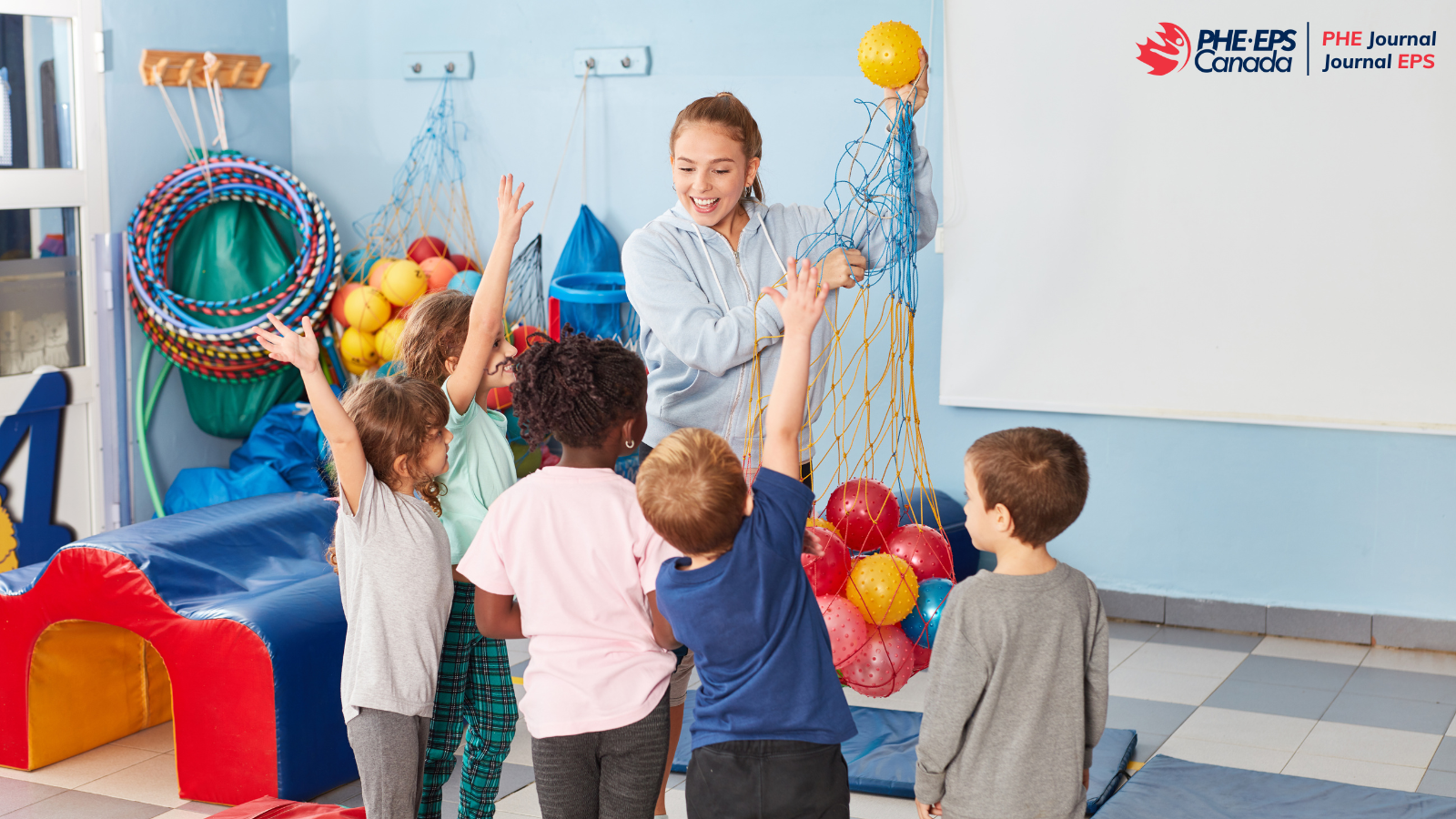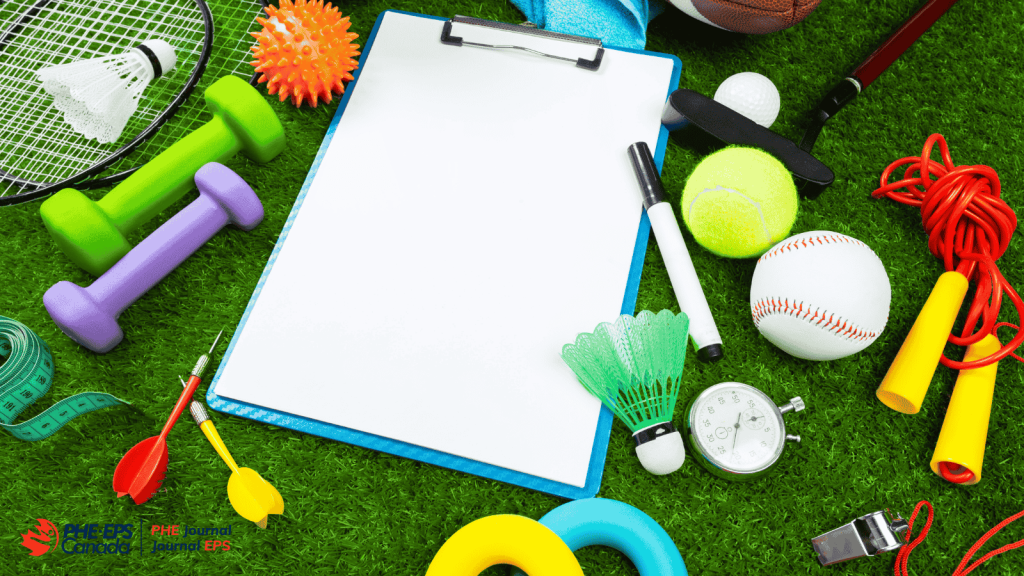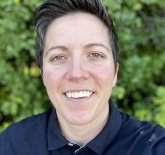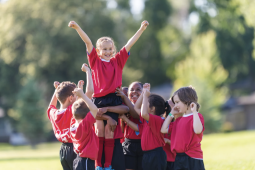Embracing the Unpredictable: Tips for Building your PE Supply Teacher Toolkit

My first year as a supply teacher is something I’ll always remember—the blend of excitement and nerves I felt with each (very) early supply call was unlike anything else. The flurry of racing thoughts as I scrambled to prepare: "What will I be teaching today? What are the students and staff like? How will I fit in? Will they notice I'm new to this? Do I need to bring anything? Why am I awake this early?"
Before I secured an established PE teacher role, I spent many years supply teaching in grades K-8 covering all subjects. When I look back on my early days as a supply teacher, I don’t feel that juggling the diverse demands and unpredictability of supply teaching was something I was fully prepared for after graduating from my teacher education program. Many times, I remember showing up to fulfill a vacant position and finding myself playing catch up in front of students because:
- the classroom, subjects, and/or duty I was originally booked to cover switched last minute;
- there were a variety of school policies, behaviours plans, or student accommodations to quickly learn;
- no lesson plans were left to rely on; and/or,
- there were limited resources to access.
On top of that, trying to manage classroom behaviour without the benefit of an established rapport with students was no small feat … It made me feel like being a “good” supply teacher required some superhuman level of balancing skills all while trying to honour my own desire of leaving a positive impact on the school and its students.
My experiences as a PE teacher ultimately inspired me to join the team at PHE Canada. It wasn’t due to a lack of enjoyment in teaching, connecting with students, or being part of a school community, but rather a stronger drive and passion for supporting new PE teachers on their own journeys.
One piece of advice that I have for newer supply PE teachers is to: be patient and enjoy the supply teaching ride because there are plenty of perks! Supply teaching offered fantastic networking opportunities, allowing me to meet a wide range of educators and administrators, boosting my professional growth, and opening doors to future job opportunities. With fewer long-term responsibilities such as on-going planning, grading, and managing parent/caregiver communications, I was able to hone many skills: teaching diverse activities, navigating unfamiliar facilities, and adjusting my classroom management techniques to various grades that I was unfamiliar with on a moment's notice. I also gained valuable exposure to different school environments and cultures, helping me determine the type of setting where I’d want to work permanently. Plus, the flexible schedule was a huge bonus, allowing for a good work-life balance. All in all, I quickly learned the need to constantly adapt and stay flexible which are invaluable skills that I want to share with newer PE educators.
This leads to my second piece of advice: recognizing what you can and cannot control! Preparing what you can ahead of time, will help you feel more confident and capable with taking on any supply teaching curveball that gets thrown your way. Whether you are a seasoned supply teacher or just starting out, I’ve put together a variety of K-8 “grab-and-go” style necessary materials and tips to not just help you survive, but THRIVE as a PE supply teacher. I’d recommend keeping a bag of these items packed in your car – you never know what’s going to happen once you arrive …

Items for your PE Supply Teaching Toolkit:
- Whistle - Whether traditional or hand-held, it’s useful for getting students' attention and transitioning between activities in larger spaces. However, not all students respond well to whistles, especially those with sensory sensitivities. I recommend checking with students first and considering alternative signals or cues, or using the homeroom teacher's established cue to gain attention.
- Running/Comfortable Shoes - When I was able to actively participate in activities with students it significantly helped with managing classroom behavior. Plus, you never know when there’s going to be that “test” fire drill.
- Water Bottle - Don’t forget to stay hydrated! I often felt unwell by the end of the day, only to realize I hadn't drank enough water. Keep it nearby—out of sight means out of mind!
- Watch - Whether it’s a wristwatch or your phone, keeping track of time is crucial. Some schools lack clocks in the gym, or the transition bell is hard to hear. I recommend setting a 10-minute timer before the period ends to allow time for cleanup, cooldown, and transitioning students to their next class.
- Lanyard - This is handy if you are given a key for the classroom or equipment room.
- Clipboard - Having a clipboard with blank paper and a pencil/pen attached was great for noting students’ behaviour, tracking tasks, and for keeping the daily plans accessible.
- Stickers – Great for incentive/participation/motivation. Even older students love stickers!
- Change of Comfortable Clothes - With constant temperature shifts and unexpected duty coverages, having an extra change of clothes is essential—you never know when you'll need it, especially after a coffee spill (trust me).
- Speaker and School Friendly Playlist - Speakers are great for playing music to make participating in activities more fun or for playing a timer as a sound cue for transitions.
Go-To Low Organizational Games (LOG) for K-8:
When equipment is sparse or you’re in a small or large space, indoor or outdoor, these go-to activities saved me when no lesson plans were left, the planned activities ended early, or when we all just needed a little break to make it through the rest of day:
- ‘Get to know you’/Icebreakers: Having a list of these types of games are great if you are new to the school and meeting the students for the first time. They can also act as a great warm-up while you are preparing for other activities. And, if they are physically active, that’s even better! Check out this link for some active icebreaker games.
- "Name, Action, Circle" - Have each student say their name followed by an action (i.e., "Melissa—jumping jack"). Start with five students, then circle back and have everyone repeat the names and actions together. Continue around the circle, five students at a time, until everyone has shared. This activity is a fun way to learn students' names and discover the types of movements they enjoy.
- Hacky sack – Students stand silently and throw a hacky sack to each other. If they talk, drop the object, or perform an ineffective pass they have to sit down. The winner is the last person standing. You can add in actions such as standing on one foot or keeping your hand behind your back. Try other variations where students don’t get eliminated and instead go down on one knee if they drop the object and can stand back up if they catch it.
- Colour Moves - Students will walk around and move based on the colour paper/item you are holding up (i.e., Green = walk fast; Yellow = regular pace; Blue = slow-motion walking). Whenever you hold up Red paper they stop. Try different locomotor skills that you or students can choose (i.e., running in place, marching, jumping, etc.).
- Human Bop-It - Similar to the usual Bop-It game, students will perform a movement to an action or cue. You or students could lead this. Over time, gradually pick up the pace of the calls and/or try different cues (i.e., explicitly use verbal cues (no demonstrations), use nonverbal cues only (demonstrate only), or mix cues and alternate between verbal and nonverbal). Movements:
-
Kick it = kick your foot
-
Twist it = jump and twist 180 & back
-
Spin it = spin 360
-
Pull-it = reach up & pull down
-
Bop-it = jump up
-
-
Partner Races - In pairs, students will carry a bean bag across the room using various parts of their bodies (i.e., can only carry it using your elbows, your ankles, one finger, etc.) to drop the bean bag in a hula-hoop or bucket. Be creative with modifications. For example, increase the challenge by yelling out two body parts that partners must use to get the bean bag to the other side of the space, such as hand and knee, head and hand, elbow and shin, etc.
-
Head & Shoulders - In pairs, students will place a bean bag between them at an equal distance. Both will follow the direction of the ‘Lead’ (teacher) as they call out and model different body parts their partner must touch (i.e., head, shoulders, knees, toes, ears, etc.). When the ‘Lead’ calls out “Nose”, both students try to grab the bean bag as quickly as possible. After a few rounds, add in extra challenges to work on impulse control and active listening: Increase speed of commands; only use verbal cues; switch up one of the cues to work on active memory (i.e. Head and Shoulders switch); change the final cue ‘Nose’ to be a clap, etc.
-
Fundamental Movement Skills Card Set - This quick and portable reference tool saved me when there were no lesson plans left. This resource offers teaching tips, a student assessment checklist, and an array of fun games and activities that introduce students to each of the 12 FUNdamentals-stage movement skills.
-
Yoga Alphabet Cards - For students who weren’t keen on participating, I’d provide them with these yoga cards and lean on these activities ideas to do in pairs or small groups. Having a friend do these with them always helped to increase participation.
-
90 of the Greatest Game You’ll Ever Play - This resource was useful for simple low organizational games or if I wanted to incorporate more challenging relays and circle games.
-
Daily Physical Activity in the Classroom Toolkit - When in a pinch, this website came in handy for quick classroom physical activities to do with students.
-
Read aloud this active book - You are a Lion! - This fun, active book has students pretend to be the animal by trying animal poses. It’s also a playful way to introduce yoga to students - double win!
Shout out to my in-service and retired teacher friends in the PHE community for sharing what tools and go-to low organizational games (LOG) they’d also recommend. I wish you all the best as you enter the upcoming school year!








